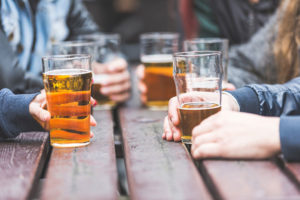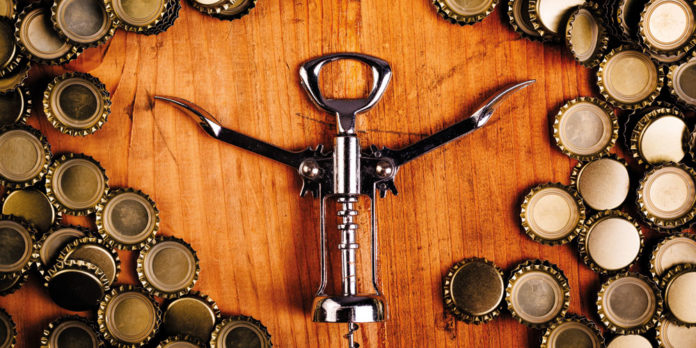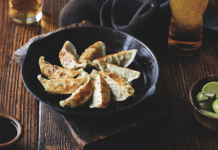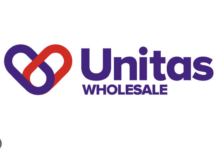The alcohol-free market is set to explode – if the products are right. Martyn Fisher looks at what beer and wine suppliers have been developing, and what wholesalers can do to get the best possible returns.
Speaking from personal experience, at those social occasions when either I or those I am with choose to abstain from alcohol, we reach for a soft drink – be it a soda, an orange juice or a water.
Many years ago, some friends and I tried a ‘blind taste test’ involving an alcohol-free lager to see if we could detect the difference. It was a simple task, and the taste of the alcohol-free beer reaffirmed my decision to stick with soft drinks whenever I wanted a night off the sauce. An informal poll of friends found that I’m not alone in having this bad experience and opinion of such beers.
Despite the majority of the public’s similarly negative perception, brewing giant Heineken has just launched an alcohol-free beer, Heineken 0.0, backed by a £2.5m marketing campaign. It believes that the no-alcohol beer market will double in size in the next four years.
If Heineken is right, wholesalers have an opportunity to get on the alcohol-free gravy train. But how do they ensure that they are stocking the right products in this category, and how can they be certain that they are stocking them in the right locations to get the best possible returns?
Heineken thinks that Heineken 0.0 will be the starter’s pistol for the category, as it has been produced by the best person for the job – the company’s global master brewer, Willem van Waesberghe. Heineken 0.0 has been launched in two SKUs – a 4x330ml bottle pack for ‘planned social occasions’ and a 6x330ml can pack for the ‘casual night in’.
The multi-million-pound marketing investment to support its launch has been aimed at addressing the main barriers to consumption that the category faces: social stigmatisation and the perception of bad taste.
Heineken cites recent research which shows that while 50% of people now say they moderate their alcohol consumption – a figure that is growing every year – only 47% of shoppers are satisfied with the existing low- or no-alcohol beers on the market.
David Lette, premium brands director at Heineken, says: “This is a fantastic-tasting beer. Our master brewer is so confident in Heineken 0.0, he has given it his seal of approval. Drinkers love it, too – initial feedback from both consumers and customers has been overwhelmingly positive, with a strong preference shown towards Heineken 0.0 versus other alcohol-free beers.
“With a high purchase intent, Heineken 0.0 will not only drive frequency with current beer drinkers, it will also bring new shoppers to the category, attracting health-conscious younger consumers who are drinking less or abstaining altogether, by delivering a great-tasting beer from a brand that they’re proud to be seen with.”
Sean Durkan, head of marketing at Bavaria UK, echoes Lette’s emphasis on improving quality. He says: “Consumers now demand better-tasting alcohol-free alternatives, which has led to a surge in the quality of the category, with many varieties of beer, including Bavaria 0.0%. These products are developed and brewed as an alcohol-free option in their own right, rather than a de-alcoholised version of their parent drink. This focus on quality and taste can only be a positive for the category.”
Liam Newton, vice president of marketing at Carlsberg UK, says the alcohol-free beer category is currently growing at 15% year-on-year. This is for a number of reasons, he notes, but particularly because “consumers are becoming increasingly conscious of trying to moderate their alcohol intake.”
He points to the growing availability of low- or no-alcohol products in the off-trade as mirroring the consumer’s desire for choice, and adds: “With summer and the barbecue season fast approaching, it is important that this trend is embraced and echoed in the alcohol-free options made available. Carlsberg 0.0% and San Miguel 0.0% are both ideal choices for such occasions, with all of the aroma, flavour and freshness that consumers expect of these quality beer brands, without the alcohol content.”
As well as the ‘quality’ buzzword that marketers are keen to associate with the category, health concerns are also seen as being pivotal to the growth of low- or no-alcohol beers
Bavaria’s Durkan, notes: “Consumers are  increasingly looking for healthier options, making alcohol-free ciders and beers such as Bavaria 0.0% an important addition to wholesalers’ ranges. With no additives and with natural ingredients, alcohol-free beer offers a real alternative to both the beer and soft drink categories, and is part of a burgeoning category in its own right.”
increasingly looking for healthier options, making alcohol-free ciders and beers such as Bavaria 0.0% an important addition to wholesalers’ ranges. With no additives and with natural ingredients, alcohol-free beer offers a real alternative to both the beer and soft drink categories, and is part of a burgeoning category in its own right.”
He adds that if the current trend towards healthy living continues, alcohol-free beer will become an increasingly appealing option to consumers and the drinks industry in turn.
“Beers with no- or low-alcohol content typically have far fewer calories than their alcoholic alternatives; for example, Bavaria 0.0% beer has only 83 calories per bottle, whereas a standard 5% lager (330ml) has around 125, as does a standard glass of wine (175ml). So the products are a compelling choice for a health-conscious consumer.
“The UK is still to catch up with other countries in Europe, where alcohol-free beer is held in much higher esteem than it is here, and it has held its own as a popular category for years. However, now there is a much wider range of alcohol-free drinks available in the UK than ever before, this variety will help lead to increased awareness of the category in the UK. There is no limit to how big the alcohol-free market can become.”
It is not just alcohol-free beer that is booming in popularity – alcohol-free wine is also riding the crest of a wave. According to Nielsen data for the 52 weeks to 10 September, 2016, the category saw an increase in value of 39%.
Halewood International’s Eisberg is leading the way with a 53% share of the market. On the role alcohol-free wine has to play, the company’s director of wine Andrew Turner, says: “Those choosing not to drink alcohol for whatever reason don’t want to be restricted to only sugary pop or fruit juices – they want to feel included in the occasion. Alcohol-free wine provides a more grown up and low calorie choice for non-drinkers.
“Tapping into the growth of sparkling as a destination category, Eisberg saw that this was a different occasion, rather than just being time for a new varietal. We introduced a sparkling blanc and rosé to our range, and with only 33 and 31 calories per 125ml serving respectively, and no more than 0.05% alcohol, it provides the fizz without the alcohol.”
What do wholesalers need to do, then, to ensure that the products fly off the shelves? Heineken’s Lette says: “Research shows that choosing a no-alcohol beverage is the first shopper purchasing decision, so ultimately, as demand for non-alcoholic beers continues to increase, a dedicated no-alcohol bay is recommended to provide impact, as well as a solid ranging of brands and formats to address shoppers on specific missions.”
Bavaria’s Durkan adds: “Low- or no-alcohol products are often viewed as a category separate to soft drinks, and although they do provide a brilliant alternative, there is a different market for the product. These differences should be made clear by wholesalers who can market low- or no-alcohol as a great choice for key occasions such as parties or family celebrations. The category is perfect for wholesalers targeting end-consumers who are looking to socialise or celebrate, but who are also health-conscious.
“Education is crucial to establishing alcohol-free drinks as a genuine category rather than an afterthought in wholesale retailing. There is an undeniable trend towards premium, so recommendations in this area are also key, with heritage and craft products playing an important role in its popularity.”
Viewpoints
 “I have actually tried the new Heineken 0.0 and it tastes like a full-bodied beer, like so many of its competitors who have really upped their game in this category over the past few years. Gone are the days when you would expect a flat taste, overpowered with malt and wheat, which left a slightly bitter aftertaste.
“I have actually tried the new Heineken 0.0 and it tastes like a full-bodied beer, like so many of its competitors who have really upped their game in this category over the past few years. Gone are the days when you would expect a flat taste, overpowered with malt and wheat, which left a slightly bitter aftertaste.
“The category has grown all-year-round, rather than its previous seasonal Christmas boost, as the products have become more refreshing, and, more importantly, in line with changing consumer trends and healthier lifestyles. I have already increased the shelf space allocated to low-alcohol drinks (LADs) and no-alcohol drinks (NADs) over thepast year as they grow in popularity.”
Telly Sarai, general manager, SK Food and Drinks, Birmingham
 “We sell Beck’s Blue beer and get through about one case a week. It’s not flying off the shelves, but it is giving people an option. There’s probably not much brand loyalty, so Heineken’s success will depend on how they market it. We would be interested in trialling Heineken 0.0.”
“We sell Beck’s Blue beer and get through about one case a week. It’s not flying off the shelves, but it is giving people an option. There’s probably not much brand loyalty, so Heineken’s success will depend on how they market it. We would be interested in trialling Heineken 0.0.”
Steve Walters, area manager of five Nisa stores, Peterborough








